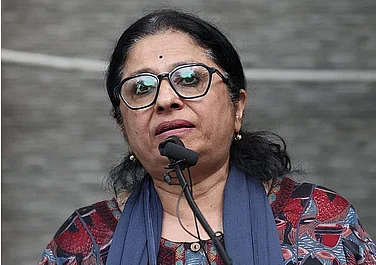In a significant initiative, the Central Board of Film Certification (CBFC) has allowed regional films dubbed in Hindi to be certified by the regional office where the original language film was issued a Censor Certificate.
An announcement to the effect was made last week by CBFC CEO Ravinder Bhakar, reversing the board's directive of April 2017 mandating that all regional language films dubbed in Hindi must be certified by the Mumbai head office prior to release.
The move shall be implemented on a pilot basis for six months, till April 20, 2024, when the CBFC shall monitor the language expertise, impact on the workload and other aspects at the regional offices before taking a final decision in the matter, said Bhakar.
Besides Mumbai, the CBFC has regional offices in New Delhi, Chennai, Kolkata, Hyderabad, Bengaluru, Thiruvananthapuram, Guwahati, and Cuttack in Odisha.
The move has been hailed by the Indian Motion Pictures Producers Association (IMPPA) President Abhay Sinha and other prominent film bodies of Bollywood and regional language films.
"We had actively engaged with CBFC to streamline the certification process and the decision will bring significant relief to regional film producers, alleviate their burden, avoid delays and pay heavy fees for certifying the Hindi versions of their films in Mumbai," said Sinha.
Federation of Western India Cine Employees (FWICE) President B. N. Tiwari said that the CBFC move "is most laudable" and will prove a boon to the regional language film-makers who dub their films Hindi save on costs, delays and other hassles.
As a CBFC officer explained, if a Telugu or Tamil film producer wants to release their dubbed Hindi version, now they can get a Censor Certificate from the concerned regional office which has certified the original film, instead of running to Mumbai for the same.
In 2022-2023, the CBFC has certified a whopping 3,847 feature films in multiple languages including Hindi, Marathi, Bhojpuri, Tamil, Telugu, Malayalam, Kannada, Bengali, Oriya, Assamese, Gujarati, and others.
Last year (2022-2023), the Mumbai CBFC alone certified 1,415 feature films, with the lion's share in Hindi with more than 1,000 getting a Censor Certificate, plus films in Marathi and Gujarati languages.
Tiwari said that in the past decade or so, the trend of dubbing films made in regional languages has grown phenomenally, particularly with Tamil, Telugu, Malayalam and Kannada films, plus Marathi and Bengali.
"Dubbing a full-length film can be less than Rs 5-lakh, but for a big budget and huge star-casts, it can be around Rs 25-30 lakh. With this additional investment, the film gets a national market which can significantly boost its revenues," Tiwari explained.
The trend of dubbing in Bollywood started with "Alam Ara" (1931) and after its immense popularity, it was dubbed in multiple Indian languages to cater a wider audience, he added.
However, it was carried forward by the Bengali film industry when many big films released in the Bengali language, especially those made by the legend Satyajit Ray, were dubbed in multiple Indian and even foreign languages, especially those that vied for international film awards.
"Many Marathi films are also classics, but get limited audience reach owing to various factors, but after dubbing their prospects hugely improve. In the past decade, the regional films dubbed in Hindi and also vice-versa are getting very good response, not only from theatre-goers but also on social media," Tiwari pointed out.
An industry expert said that while dubbing a feature film can take around a month, the process of subtitles (all dialogues in a particular language, originally intended to cater to the hearing-challenged audiences) is much simpler, can be completed in barely a week and cost under Rs 50,000 per film.
Additionally, even foreign language films, especially from Hollywood, are getting a huge response in their dubbed versions, or with subtitles, whether in cinemas, television channels, OTT platforms or social media.
With the advent of artificial intelligence, both dubbing and subtitling of films is expected to get further simplified, quicker and effective, and "both these would become the norm rather than an exception".


























